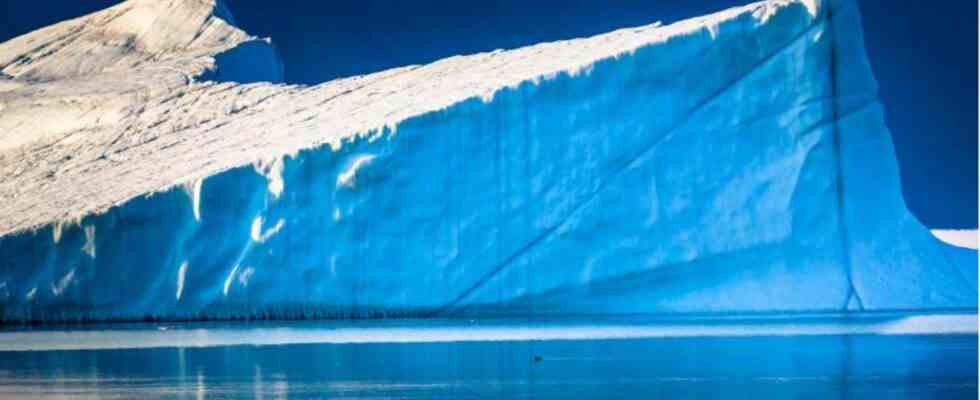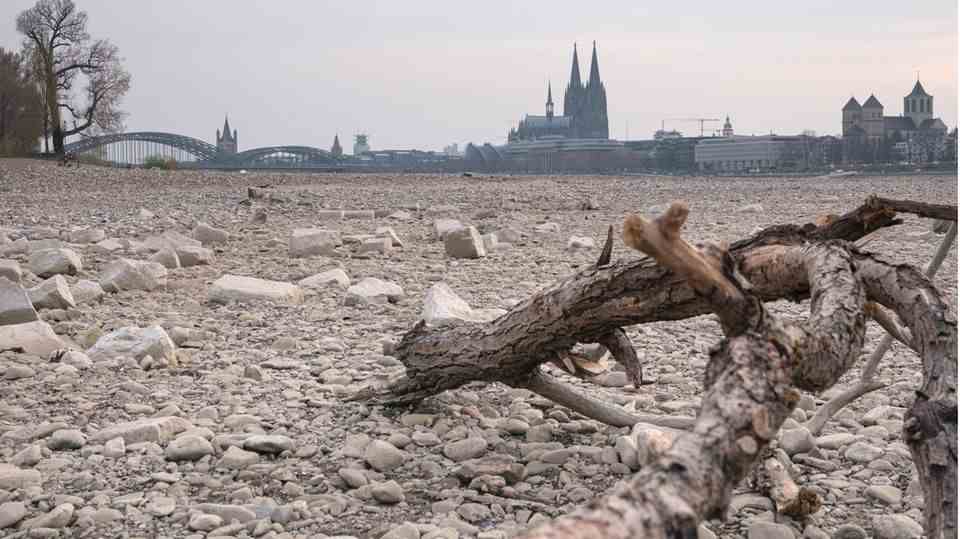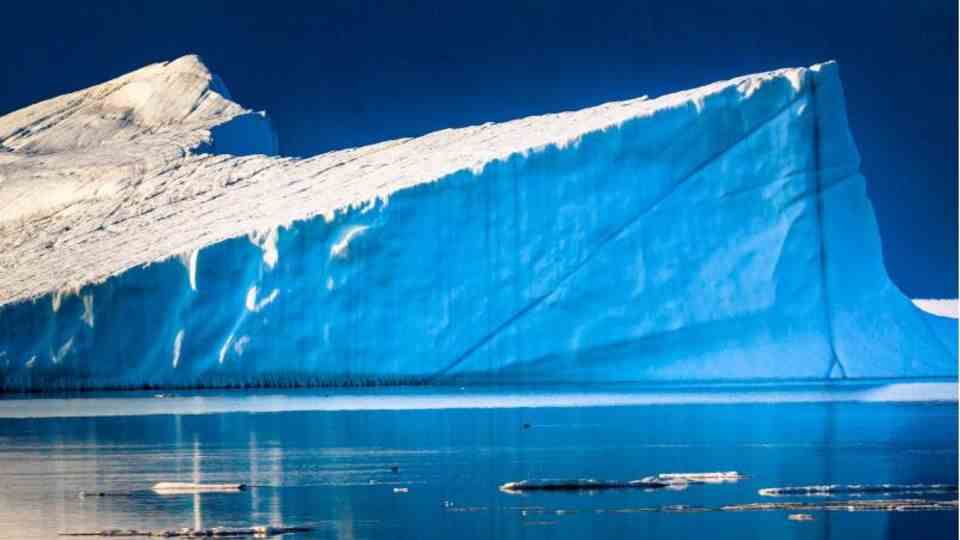Current study
Caught in a vicious circle: The Arctic is warming four times faster than the rest of the world – with catastrophic consequences
Icebergs float in Baffin Bay, near the Greenland settlement of Pituffik, on July 15. Observations by the observation satellite ICESAT-2 show an enormous thinning of the Arctic sea ice in just three years
© Kerem Yücel / AFP
The north is thawing – and much faster than previously assumed. The average temperature in the Arctic is rising four times faster than the rest of the world, according to a new study. A vicious circle with catastrophic consequences.
According to the current IPCC the planet has already warmed by 1.1 degrees since the start of the Industrial Revolution. It is therefore obvious that the north is also melting away – but it is doing so much faster than previously thought. As scientists wrote on Thursday in the specialist magazine “Communications Earth & Environment” published, the Arctic has warmed four times faster than the rest of our planet over the past four decades. And that’s just the tip of the iceberg. In some regions of the north, for example in the Barents Sea between Russia and the Norwegian archipelago Spitsbergen, increased The average temperature is seven times faster, which means, according to the Australian news network “Conversation”, that the Arctic is already an average of three degrees warmer than it was in 1980.
Do previous models underestimate the warming?
As “Science News” reports, earlier studies still assumed that Arctic temperatures were “only” rising two to three times faster than in other regions of the world. The research team led by meteorologist Mika Rantanen from the Finnish Meteorological Institute in Helsinki came to the shocking new findings by analyzing observation data from the years 1979 to 2021. During this period, the earth’s temperature rose by an average of 0.2 degrees Celsius per decade – in the Arctic it was 0.75 degrees at the same time.
“Our results suggest that the recent quadrupling of warming in the Arctic is either an extremely unlikely event, or that climate models have a systematic tendency to underestimate the amplification,” the study reads. The inaccuracy of the models to realistically simulate past warming in the Arctic calls into question how well future changes in the Arctic – and their consequences for the rest of the world – could be predicted.
Thomas Ballinger, a researcher at the University of Alaska Fairbanks, told The New York Times that defining the region is critical to understanding Arctic change. A “larger” Arctic includes more land, which in turn reduces the impact of ice-ocean feedback on average temperatures.
Of icy time bombs and vicious circles
There are a number of explanations for why the North is being so disproportionately affected by climate change. According to “Conversation”, sea ice plays a crucial role. The layer, which is usually one to five meters thick, is covered with a blanket of snow, which in turn reflects around 85 percent of the light. The opposite is the case in the dark ocean: the water absorbs a good 90 percent of the sun’s rays. As the ice melts faster as a result of global warming, the ocean absorbs more light – and absorbs more heat. A vicious circle. Experts refer to this phenomenon as “polar amplification”.
The consequences of the dwindling white are catastrophic – especially because the Arctic is one of the most sensitive climatic regions in the world. But not only the ice acts as a fire accelerator. The permafrost (actually permanently frozen ground) traps the carbon in the underlying soil. When the perpetual ice melts, greenhouse gases such as carbon dioxide and methane are released into the atmosphere, further fueling climate change. According to Conversation, permafrost alone contains enough carbon to raise the average global temperature by more than three degrees. A “time bomb” whose effects would be uncontrollable. According to the current state of science, these feedback effects would exceed a critical point with a warming of 4.5 degrees.
Greenland Ice Sheet under massive threat
Scientists are also concerned about the receding Greenland ice sheet. On the third weekend in July, 18 billion tons of ice melted on the largest ice sheet in the northern hemisphere – enough to cover the entire area of Hesse with 30 centimeters of water. And that three times (). Scientists had warned that such extreme events could become more frequent and lead to a dangerous rise in sea levels.
According to data from a NASA Earth observation satellite called ICESat-2, Greenland has been losing 200 billion tons of ice a year over the past two decades, ice researcher Nathan Kurtz tells “USAToday“.
Sources: “Science News“; “The Conversation“; “New York Times“



